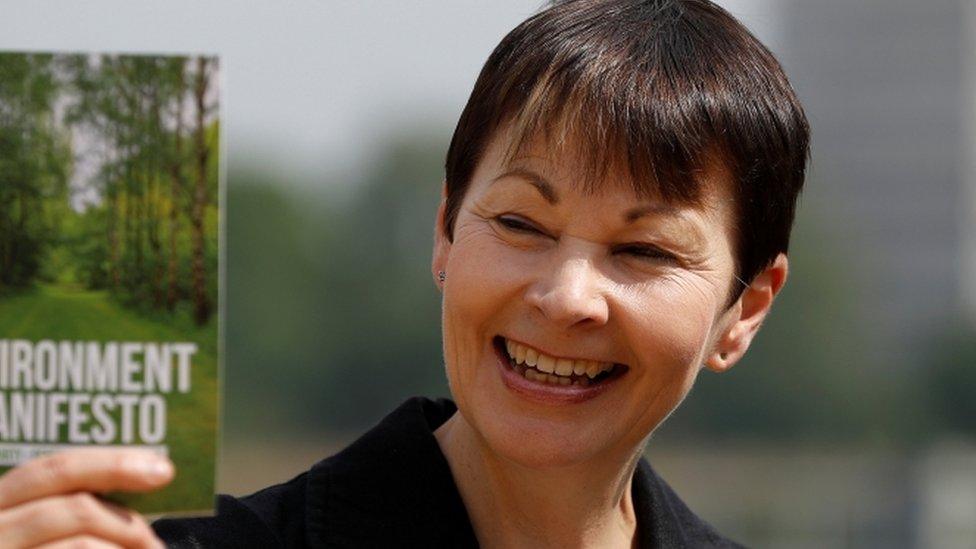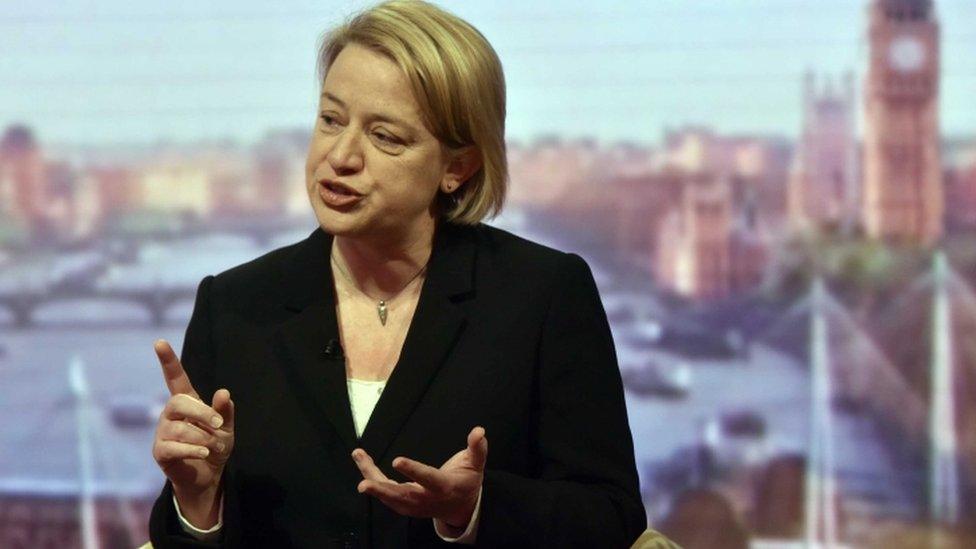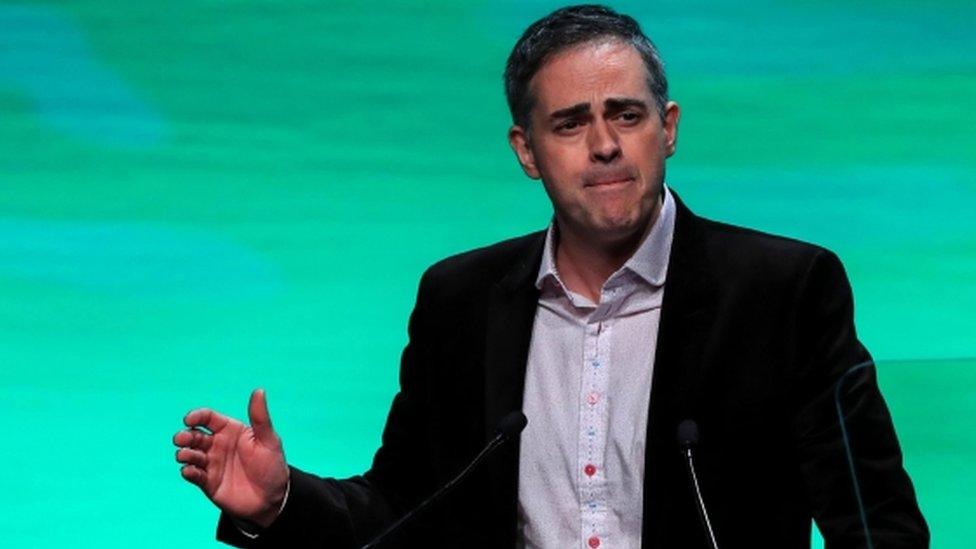Guide to the parties: Green Party
- Published

The Green Party will hoping to build on its success in getting an MP elected in the last two elections and add to that number this time round.
Potted history:
The Greens began life in the mid 1970s as the Ecology Party, which had its roots in campaigns to protect the environment.
A party called People fielded five candidates in the February 1974 general election before renaming itself the Ecology Party and adopting the "Manifesto for a Sustainable Society". This document would eventually become a blueprint for the Green Party, which came into being in 1985.
The Greens long opted not to have a leader, instead being represented by two "principal speakers", but ditched the policy in 2008, electing Caroline Lucas to the helm.
Ms Lucas was succeeded as leader by Natalie Bennett in 2012, who led the Greens in England and Wales in the 2015 general election campaign - but the Brighton MP has since returned to the leadership, this time sharing it with Jonathan Bartley, the pair running on a joint ticket.
There are separate Green parties for Scotland - the Scottish Green party, external - and Northern Ireland - the Green Party in Northern Ireland, which is part of the Green Party of Ireland.
Where are they now?
The Greens have a single seat at Westminster - Brighton Pavilion, which has been held by Caroline Lucas since 2010 and where she is defending a majority of 14.5%. They also have three MEPs.
The party has built strong pockets of local support in areas such as Norwich, Oxford, and Bristol.
Its expansion of policy proposals in recent years beyond purely environmental issues has helped the party to present itself as an alternative for left-of-centre voters disillusioned with Labour and the Lib Dems.
The latest membership figures, published in March, say the Green Party (England and Wales) has 55,500 members. The Scottish Greens had 9,001 members at the end of 2015. The Green Party in Northern Ireland was said to have had 322 members in 2015.
Key players:
Caroline Lucas is the Green Party version of UKIP's Nigel Farage. While she might not welcome the comparison, she has been the leading figure in the party for a decade, and remains very much the public face of the party.
She is a veteran campaigner, who has been politically active since joining the anti-nuclear peace camp at Greenham Common, and spent 10 years as an MEP.

Former leader Natalie Bennett took part in the televised debates in 2015
Bartley, who once worked for former prime minister John Major, is also fronting the campaign. Former leader Bennett is still an active campaigner.
Leader's philosophy in a quote:
"We have been pigeonholed as a single-issue party but we have policies across the board and in our last few elections we have been really spelling that out."
What the critics say:
"A progressive alliance is misbegotten and doomed," Nick Cohen, journalist.
What do they hope to achieve?
The party will hope to pick up votes from across the spectrum, but will be happy with gaining a second seat at Westminster. Bristol West and the Isle of Wight are among target seats

Jonathan Bartley is the co-leader
It sees the Conservatives as its primary foe, and is keen to form a "progressive alliance" with other left-of-centre parties to try to prevent a Tory landslide.
In some constituencies where a particular candidate is thought to have a good chance of beating the Conservative, candidates from other parties would not stand.
For instance, the Lib Dems have agreed not to contest Lucas's Brighton seat, while the Greens are not standing in some seats, including St Ives and West Cumbria. Labour, however, has rejected the Greens advances.
Lucas is also keen to try to maximise the number of MPs who will support moves for electoral reform.
Strong suit?
As you might expect, a comprehensive package of measures designed to protect the natural environment. The party has a comprehensive manifesto, but unlike other parties the green agenda will always take top priority.
Where do they stand on Brexit?
While the party accepts that the 2016 referendum result was an instruction for government to start talks on Brexit, it feels strongly that the public should be consulted again on the final deal.
It would offer a second referendum on the details of any Brexit deal, with voters having the voters having the option to remain in the EU if they are unhappy with the result of Brexit talks.
Five key policies:
A second referendum on the details of any Brexit deal, with 16 and 17-year olds getting the vote
A new Clean Air Act, and an Environmental Protection Act to safeguard EU laws that protect British nature, wildlife and countryside
Ban fracking, scrap plans for all new nuclear power stations, including Hinkley Point C
A fair energy system with progressive tariffs so people who use less energy pay less per unit than the big consumers
A bottle deposit scheme to stop 16 million plastic bottles ending up in the environment every day